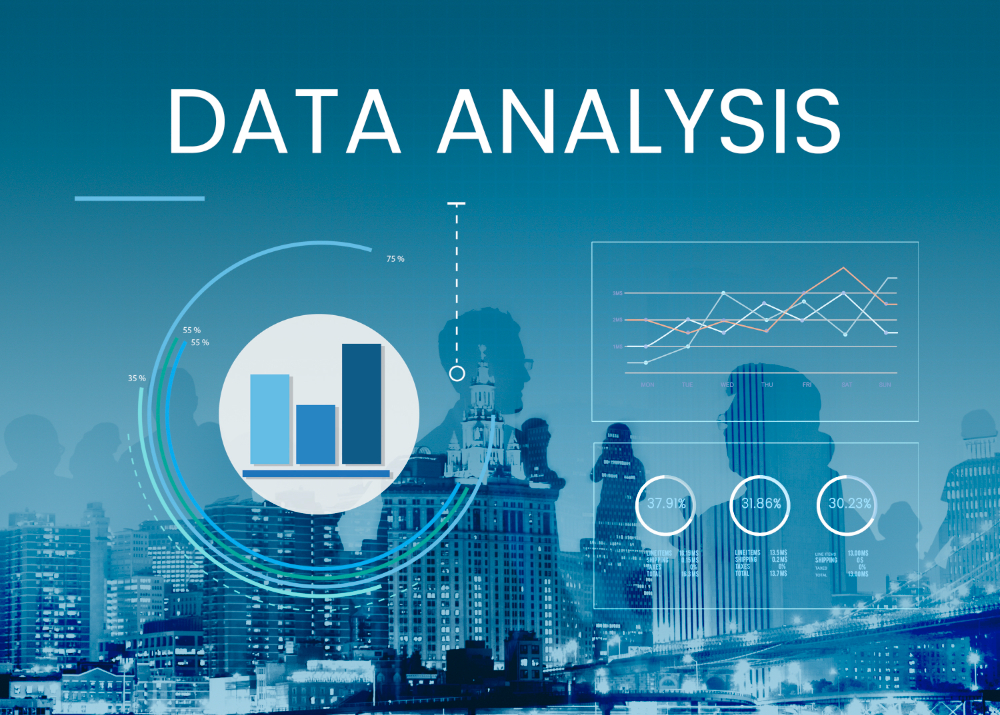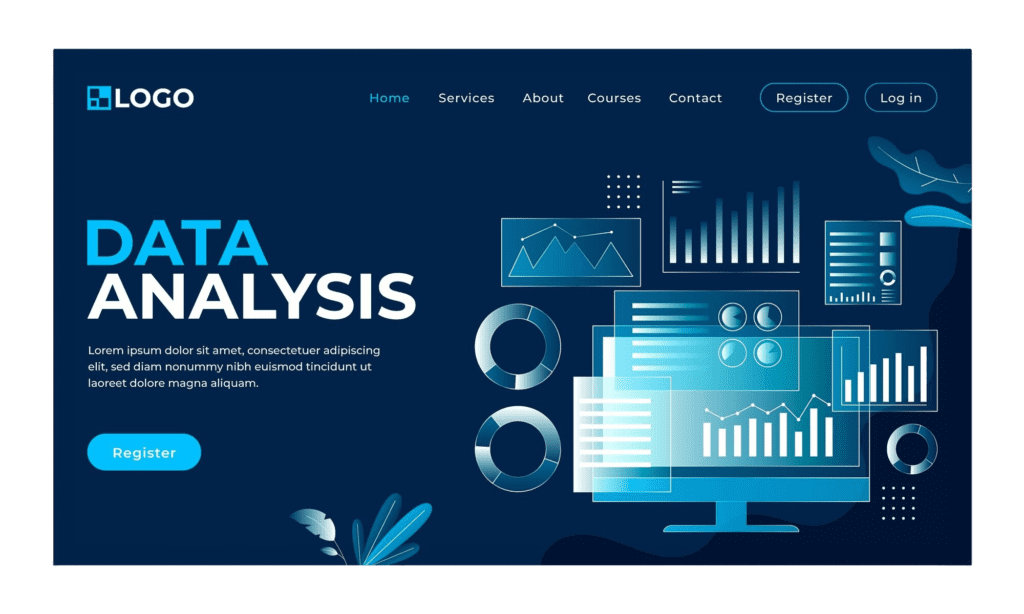
In today’s fast-paced digital world, data analytics in marketing is a game-changer for businesses aiming to stay competitive. By leveraging data-driven insights, companies can better understand their customers, refine campaigns, and optimize marketing strategies. This guide will delve deep into the role of data analytics in crafting impactful marketing strategies, complete with actionable insights, fun facts, and references to government-authorized data for added credibility.
What Is Data Analytics in Marketing?
Data analytics in marketing involves gathering, analyzing, and interpreting data from multiple sources to uncover patterns and trends. These insights enable businesses to design targeted campaigns, improve customer experiences, and increase their overall marketing efficiency.
From website activity to social media behavior and sales trends, data provides marketers with a wealth of information to connect with audiences effectively and deliver personalized messaging.
Fun Fact:
Companies using data-driven marketing report up to 5-8 times higher ROI compared to traditional marketing methods.
Why Is Data Analytics Essential for Marketing Success?
- Improved Personalization
With data analytics, businesses can segment their audience by preferences, habits, and demographics. This allows them to tailor campaigns to meet the needs of specific customer groups. - Maximized ROI
Analyzing campaign performance helps marketers focus their budget on strategies that yield the best results, minimizing wasted resources. - Real-Time Campaign Adjustments
Analytics tools provide real-time insights, enabling marketers to tweak ongoing campaigns for optimal performance. - Enhanced Customer Understanding
Businesses can identify customer pain points and address them effectively through data insights, resulting in better customer satisfaction.
Frequently Asked Questions About Data Analytics in Marketing
1. What Metrics Should I Track in Marketing Analytics?
- Customer Lifetime Value (CLV): Predicts total revenue from a customer throughout their relationship with the company.
- Customer Acquisition Cost (CAC): Determines how much you spend to acquire a new customer.
- Conversion Rate: Shows how well your campaigns turn leads into paying customers.
- Bounce Rate: Highlights how many visitors leave your site after viewing just one page.
2. How Does Predictive Analytics Support Marketing?
Predictive analytics uses historical data to forecast future outcomes. For example, analyzing purchase history can help businesses anticipate what products customers are likely to buy next, enabling proactive marketing.
3. What Are the Best Tools for Marketing Analytics?
- Google Analytics: To monitor website performance and visitor behavior.
- Tableau: For creating interactive data visualizations.
- HubSpot: A CRM tool with built-in marketing analytics.
- Power BI: Ideal for generating in-depth reports.
How to Use Data Analytics to Build an Effective Marketing Strategy
Step 1: Define Clear Goals
Before diving into analytics, establish clear and measurable objectives. Examples include:
- Increasing website traffic by 25% in the next quarter.
- Improving email campaign open rates by 15%.
Step 2: Collect Data from Reliable Sources
- Website Analytics: Tools like Google Analytics provide data on visitor demographics, behavior, and preferences.
- Social Media Platforms: Understand engagement levels, follower growth, and audience sentiment.
- CRM Data: Gain insights into customer interactions and purchase history.
Step 3: Segment Your Audience
Audience segmentation ensures your marketing messages are relevant. Group customers based on shared traits like location, interests, or purchase habits.
| Segment | Traits | Suggested Strategy |
| Millennials | Tech-savvy, social media users | Influencer marketing, social ads |
| Gen X | Value-driven, brand loyal | Loyalty programs, email campaigns |
| Gen Z | Visual content consumers | Video marketing, interactive posts |
Step 4: Predict and Anticipate Trends
Predictive analytics tools can help you stay ahead of customer demands. For instance, if winter is approaching and your data shows rising sales of jackets in previous years, you can prepare a marketing campaign to promote new winter collections.
Step 5: Continuously Refine Campaigns
Monitor your campaign performance regularly using analytics tools. Use A/B testing to determine what resonates most with your audience, and refine your campaigns accordingly.

Pro Tips for Effective Marketing with Data Analytics
- Use Visual Tools
Data visualization makes complex data easier to interpret. Charts, graphs, and dashboards can help convey findings effectively to your team. - Focus on Key Metrics
Avoid data overload by prioritizing metrics that align with your marketing goals. - Start Small
Begin with a limited data set or single campaign, and scale up as your analytics expertise grows. - Ensure Data Compliance
Adhere to data privacy regulations such as GDPR and CCPA to maintain customer trust.
A Real-Life Example: E-commerce Conversion Funnel
| Funnel Stage | Number of Users | Conversion Rate |
| Website Visitors | 60,000 | 12% |
| Added to Cart | 7,200 | 18% |
| Completed Purchases | 1,300 | 54% |
This data reveals areas where improvements in user experience or checkout processes could significantly boost conversions.
Overcoming Challenges in Marketing Data Analytics
1. Data Privacy Issues
With growing privacy concerns, businesses must ensure compliance with regulations like GDPR or HIPAA.
2. Data Volume Management
Sifting through excessive data can be overwhelming. Focus on actionable insights rather than trying to process everything at once.
3. Skill Gaps
Not every marketer is a data expert. Invest in training programs or collaborate with specialists to close knowledge gaps.
4. System Integration
Integrating data from multiple platforms can be challenging. Tools like APIs or middleware software can streamline the process.
Fun Facts About Marketing Analytics
- Companies that rely on data-driven decision-making are 19% more profitable than those that don’t.
- Personalization powered by analytics increases conversion rates by up to 80%.
- Globally, 64% of marketers say data analytics improves decision-making.
Incorporating Government Data for Reliable Insights
Government websites offer valuable and credible data for market research. For example:
- In the U.S., the Bureau of Economic Analysis provides economic data.
- In India, the Ministry of Statistics and Programme Implementation offers demographic and market insights.
Using trusted sources ensures that your marketing insights are backed by authoritative data.
Internal Link:
Looking for expert assistance in analytics-driven marketing? Contact us for tailored solutions.
Emerging Trends in Data-Driven Marketing
- AI and Machine Learning
AI is making predictive analytics more accurate, helping businesses anticipate customer needs with precision. - Voice Analytics
As voice search grows in popularity, analyzing voice data helps marketers optimize content for conversational queries. - Hyper-Personalized Experiences
Data analytics enables marketers to create experiences that resonate deeply with individual users. - IoT Analytics
Data from connected devices like smartwatches and home assistants is opening new avenues for understanding consumer behavior.
Conclusion
Data analytics in marketing is no longer optional; it’s a necessity for businesses aiming to thrive in a competitive market. By leveraging analytics effectively, companies can deliver personalized experiences, boost ROI, and stay ahead of the competition.
Ready to harness the power of data analytics? Contact us today to transform your marketing strategy.


